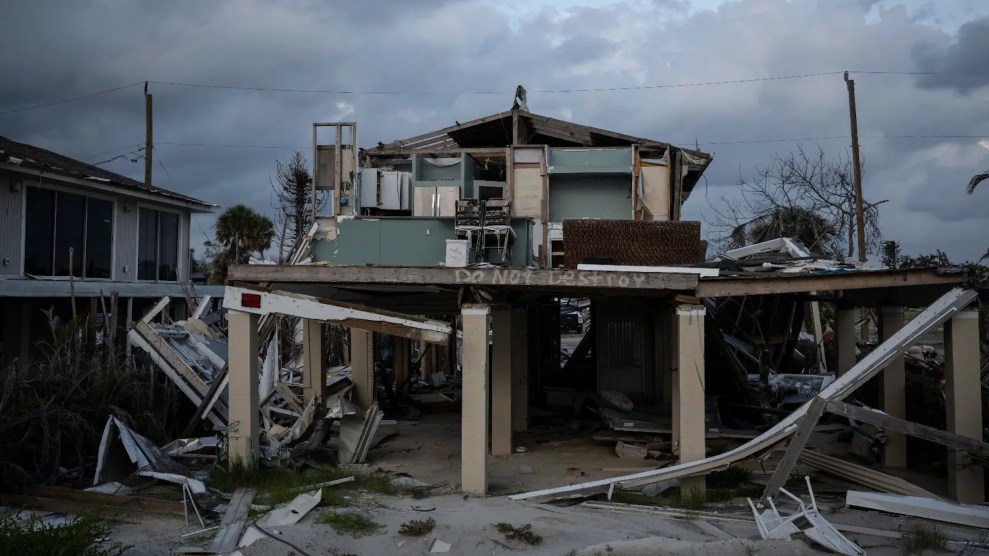Remember Tris? Tris was the flame-retardant chemical added to over 240 million pairs of children’s pajamas—until research showed that it was carcinogenic. The latest testing shows that Tris (2,3-dibromopropyl) phosphate causes kidney cancer in 300 of each million male children exposed to it, with an additional 60 cases per million girl children. In 1977, the U.S. Consumer Product Safety Commission (CPSC) banned the sale of Tris-impregnated garments and forced manufacturers to take back millions of pairs of pajamas.
This produced a dilemma for more than 100 medium- and small-volume garment manufacturers. They had put much of their investment into producing Tris-treated pajamas. Now their warehouses were full of them. Not only could these pajamas not be sold, they couldn’t be thrown away—because of Tris’ toxicity, the government would only let the manufacturers bury or burn the pajamas, or use them as industrial wiping cloths.
The manufacture of pajamas and other clothing is one of the few industries in which many companies are small and family- owned. The pajama makers for the most part were firms of less than 100 employees, mostly in the South or on New York’s Lower East Side. Through lawsuits, they tried to get the financial burden of the Tris disaster shifted to the giant mills that had actually made the cloth. No luck. The big department stores that had ordered the pajamas would not bear any of the loss; nor would the chemical company that manufactured Tris. Finally, the pajama makers turned to the federal government, which, after all, had required them to add Tris to pajamas, then banned the sale of those garments. A bill granting the small companies relief passed Congress, but President Carter vetoed it. Today, many of these firms face bankruptcy.
Meanwhile, something had to be done with all the carcinogenic pajamas. Slowly, advertisements began appearing in the classified pages of Women’s Wear Daily: “TRIS-TRIS-TRIS…. We will buy any fabric containing Tris,” said an ad placed by Paul Rothman Industries. “TRIS—We will purchase any large quantities of garments containing Tris,” said another, placed by Cord Exporters.
Export. Another dump was in the works, and this time it was the middlemen who stood to make a killing. Exporters were able to obtain the pajamas cheaply, usually at 10-30 percent of the normal wholesale price.
Sadly, the pajama makers who recovered even that meager amount were usually the larger companies in the field—those which needed it least. The small firms were busy lobbying Congress for their ill-fated relief bill.
Just who were the middlemen, the profiteers of this particular dump? They have been hard to track down. Paul Rothman, despite his ad, claims today that he never exported a single garment or bolt of cloth. Cord Exporters disappeared from its closet-sized office. Its principal, Morris Fine, broke his lease and is being sought by New York sheriffs for back rent.
One exporter we were able to track down was a New York firm by the unlikely name of Karl J. Marx & Co. The company is what is known as a “commission house” or “buying office”; it takes a cut for representing out-of-state and foreign buyers in New York’s crowded garment district. When we visited Marx & Company’s Seventh Avenue office recently, an employee, who wished to remain anonymous, said the company had indeed exported Tris-treated pajamas, about 12,000 pairs. These were bought by a Venezuelan wholesaler, who sold them around South America and the Caribbean.
Soon, the employee’s boss, a florid and hostile man, entered the room and wanted to know our business. Told that it was Tris exports, the man (was he Karl Marx himself? We do not know) insisted that his firm had nothing to do with such matters. Behind him we could glimpse an office subdivided into cubicles, some with pajamas draped over the partitions.
Experts in the trade estimate that tens of millions of pairs of Tris-treated pajamas were shipped quietly out of the U.S. between the time Tris was banned here in 1977 and June 1978, when the CPSC slapped a ban on Tris exports.
Where did thse carcinogenic pajamas end up? “Europe” was all that one manufacturer, Lou Bates of Bates Nitewear, Inc., in Greensboro, North Carolina, would specify as far as his pajamas were concerned. Bates said he had actually gone down to the docks and watched workers load his garments on ships, to make sure they were headed across the Atlantic and not for Canada or Mexico, from which they might be quietly shipped back into the U.S. and into legal trouble.
The Colombian newspaper El Tiempo reports that other batches of pajamas with Tris are being sold in Bogota and San Andrés (a free-port island off Central America); another shipment has been traced to Caracas; and the French National Consumer Institute, in June of last year, reported finding Tris-treated pajamas on sale in Paris. The labels on the French shipment showed they once had been made for Sears, Roebuck. But America’s largest retailer denies any knowledge of their export, saying only that a manufacturer recalled the goods and sent them abroad.















